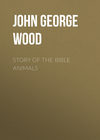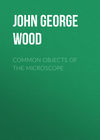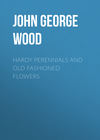Loe raamatut: «Bible Animals», lehekülg 45
INVERTEBRATES
MOLLUSCS
The purple of Scripture—Various Molluscs from which it is obtained—The common Dog-Whelk of England—The sac containing the purple dye—Curious change of colour—Mode of obtaining the dye—The Tyrian purple—The king of the Ethiopians and the purple robe—The professional purple dyers—Various words expressive of different shades of purple—Care taken to keep the preparation of the dye secret.
Leaving the higher forms of animal life, we now pass to the Invertebrated Animals which are mentioned in Scripture.
As may be inferred from the extreme looseness of nomenclature which prevails among the higher animals, the species which can be identified are comparatively few, and of them but a very few details are given in the Scriptures.
Taking them in their zoological order, we will begin with the Molluscs.
We are all familiar with the value which was set by the ancients upon the peculiar dye which may be called by the name of Imperial Purple. In the first place, it was exceedingly costly, not only for its richness of hue, but from the great difficulty with which a sufficient quantity could be procured for staining a dress. Purple was exclusively a royal colour, which might not be worn by a subject. Among the ancient Romans, during the times of the Cæsars, any one who ventured to appear in a dress of purple would do so at the peril of his life. In the consular days of Rome, the dress of the consuls was white, striped with purple; but the Cæsars advanced another step in luxury, and dyed the whole toga of this costly hue.
The colour of the dye is scarcely what we understand by the term "purple," i.e. a mixture of blue and red. It has but very little blue in it, and has been compared by the ancients to the colour of newly-clotted blood. It is obtained from several Molluscs belonging to the great Whelk family, the chief of which is the Murex brandaris. Another species is Murex trunculus, another is Purpura hæmastoma, and we have a fourth on our own coast, the common Dog-Whelk, or Dog-Periwinkle (Purpura lapillus).
The shell is shaped something like that of a whelk, but is very smooth and porcelain-like, and is generally white, ornamented with several coloured bands. It is, however, one of the most variable of shells, differing not only in colour but in form. It always inhabits the belt of the shore between tide-marks, and preys upon other Molluscs, such as the mussel and periwinkle, literally licking them to pieces with its long riband tongue.
This tongue is beset with rows of hooked teeth, exactly like the shark-tooth weapons of the Samoan and Mangaian Islanders, and with it the creature is enabled to bore through the shells of mussels and similar Molluscs, and to eat the enclosed animal. It is very destructive to periwinkles, thrusting its tongue through the mouth of the shell, piercing easily the operculum by which the entrance is closed, and gradually scooping out the unfortunate inmate.
Even the bivalves, which can shut themselves up between two shells, fare no better, the tongue of the Dog-Whelk rasping a hole in the hard shell in eight-and-forty hours.
Any of my readers who desire to obtain a very fair specimen of the old imperial purple can do so without difficulty.
Let him go down to the sea-shore, and collect a number of Dog-Whelks—a task of no difficulty, as a bushel may be obtained in a very short time. Let him provide himself with a piece of perfectly clean linen, or pure white woollen fabric, and a pair of fine scissors or a sharp knife.
In order to procure the animal, the shell must be broken with a sharp blow of a small hammer, and the receptacle of the colouring matter can then be seen behind the head, and recognised by its lighter hue.
When it is opened, a creamy sort of matter exudes. It is yellowish, and gives no promise of its future richness of hue. There is only one drop of this matter in each animal, and it is about sufficient in quantity to stain a piece of linen the size of a sixpence.
The best mode of seeing the full beauty of the purple is to take a number of the Molluscs, and to stain as large a surface as possible. The piece of linen should then be exposed to the rays of the sun, when it will go through a most curious series of colours. The yellow begins to turn green, and, after a while, the stained portions of the linen will be entirely green, the yellow having been vanquished by the blue. By degrees the blue predominates more and more over the yellow, until the linen is no more green, but blue. Then, just as the yellow yielded to the blue, the blue yields to red, and becomes first violet, then purple, and lastly assumes the blood-red hue of royalty.
The colour is very permanent, and, instead of fading by time, seems rather to brighten. Some two hundred years ago there was an established trade in this dye in Ireland; but it has long ago been crushed by the cheaper, though less permanent, dyes which have since been invented.
In some cases the ancients appear not to have troubled themselves with the complicated operation of taking the animal out of the shell, opening the receptacle, and squeezing the contents on the fabric to be dyed, but simply crushed the whole of the Mollusc, so as to set the colouring matter free, and steeped the cloth in the pulp. Tyre was one of the most celebrated spots for this manufacture, the "Tyrian dye" being celebrated for its richness. Heaps of broken shells remain to the present day as memorials of the long-perished manufacture.
The value which the ancients set upon this dye is shown by many passages in various books. Among others we may refer to Herodotus.
Cambyses, it appears, had a design to make war upon three nations, the Ammonians, the Carthaginians, and the Ethiopians. He determined to invade the first by land, and the second by sea; but, being ignorant of the best method of reaching the Ethiopians, he dispatched messengers to them, nominally as ambassadors, but practically as spies. He sent to the King of Ethiopia valuable presents—namely, a purple mantle, a golden necklace and bracelet, an elaborate box of perfumed ointment, and a cask of palm-wine, these evidently being considered a proof of imperial magnificence.
The Ethiopian king ridiculed the jewels, praised the wine, and asked curiously concerning the dye with which the purple mantle was stained. On being told the mode of preparation, he refused to believe the visitors, and, referring to the changing hues of the mantle and to the perfume of the ointment, he showed his appreciation of their real character by saying that the goods were deceptive, and so were the bearers.
This curious narrative occurs in the third book, chaps. 19-22.
The same historian has in another place a passing allusion to the trade of catching the purple-producing whelks. In his fourth book, chap. 151, he mentions a man who was a purple-dyer by trade, the word signifying equally one who procures the Molluscs as one who dyes the threads of which the purple fabrics are woven.
The dye-producing power is not restricted to the whelks, but is shared by other Molluscs. For example, the Diadem Staircase Shell (Scalaria diadema) secretes a substance which produces a purple hue, and the Cerithium telescopium produces a dye which retains its green hue, instead of passing into blue and red.
The Hebrew word argaman, which signifies the regal purple, occurs several times in Scripture, and takes a slightly different form according to the Chaldaic or Hebraic idiom.
For example, we find it in Exod. xxv. 4: "This is the offering which ye shall take of them: gold, and silver, and brass,
"And blue, and purple, and scarlet, and fine linen," &c. &c.
It occurs again in 2 Chron. ii. 7: "Send me now therefore a man cunning to work in gold, and in silver, and in brass, and in iron, and in purple, and crimson, and blue." These words are repeated in ver. 14.
A very important use of this word is found in Dan. v. 7: "And the king spake, and said to the wise men of Babylon, Whosoever shall read this writing, and show me the interpretation thereof, shall be clothed with scarlet" ("purple" in margin), "and have a chain of gold about his neck, and shall be the third ruler in the kingdom." Here we find that the dye in question was a regal one, that the wearing it was a matter of sumptuary law, and that the fact of being allowed to wear it was a sign that the wearer was of the very highest rank.
The Jewish Bible invariably translates the word as "red-purple."
That the preparers of the precious purple colour took care to preserve their art a secret, is evident from the writings of the Talmudists, who had the very vaguest ideas respecting the dye. They knew that it was obtained from a marine Mollusc, but thought that the creature only made its appearance once in seventy years, and that this scarcity was the cause of its costliness. They said that the dye obtained from one sea was blackish, evidently referring to the ink of the cuttle; that when it was obtained from another it was violet, and that the Phœnician waters alone produced the true red-purple hue.
They accounted for its colour by saying that the animal took the colour of the sea which it inhabited: the sea was like the sky which it reflected, the sky was like the throne of God, and the throne of God was like the sapphire. Therefore, the dye was like the sapphire. It is not impossible even that the dyers exhibited specimens of the Violet Snail, or Janthina, which is of a rich blue colour, and which would readily be accepted as the source of the Tyrian dye.
THE SNAIL
The Snail which melteth—Rendering of the Jewish Bible—Theory respecting the track of the Snail—The Hebrew word Shablul—Various Snails of Palestine.
There is a very remarkable and not very intelligible passage in Ps. lviii. 8: "As a snail which melteth, let every one of them pass away." The Jewish Bible renders the passage in a way which explains the idea which evidently prevailed at the time when the Psalms were composed: "As a snail let him melt as he passeth on."
The ancients had an idea that the slimy track made by a Snail as it crawled along was subtracted from the substance of its body, and that in consequence the farther it crept, the smaller it became, until at last it wasted entirely away. The commentators on the Talmud took this view of the case. The Hebrew word shablul, which undoubtedly does signify a Snail of some kind, is thus explained: "The Shablul is a creeping thing: when it comes out of its shell, saliva pours from itself, until it becomes liquid, and so dies."
Other explanations of this passage have been offered, but there is no doubt that the view taken by these commentators is the correct one, and that the Psalmist, when he wrote the terrible series of denunciations in which the passage in question occurs, had in his mind the popular belief regarding the gradual wasting away of the Snail as it "passeth on."
It is needless to say that no particular species of Snail is mentioned, and almost as needless to state that in Palestine there are many species of Snails, to any or all of which these words are equally applicable.
THE ONYCHA
Ingredients of the sacred incense—The Onyx, or Onycha—Derivation of the word—The Arabic Dofr—The Doofu of Abyssinia—Odour of the perfume.
In Exod. xxx. 34 there occurs a remarkable word, shecheleth, which is used to describe one of the ingredients of the incense to be used in Divine worship. The Jewish Bible renders the word rightly, "onycha," while Buxtorf renders it by "onyx," a word which is likely to mislead the reader, and to cause him to believe it to be a mineral, and not an animal substance.
The Onycha is the operculum of one of the Strombi or Wing-shells, and derives its name from the resemblance which it bears in those shells to a nail or claw. The Greek word onyx primarily signifies a nail, and is indeed the origin of our own word. Secondarily, it is used to denote a precious stone, partly because the white bands of the sardonyx bear some resemblance to the white semi-lunar marks at the base of human nails. In consequence of the resemblance of the operculum to a claw or nail, the Arabs call the Wing-shell "Dofr-el-afrit," or Afrit's (i.e. demon's) claw.
The operculum of the Wing-shells has a sharp and powerful scent when burned, and, when mixed with substances more fragrant but less powerful, it has the effect of adding to their potency if not to their fragrance.
A remarkable corroboration of this rendering occurs in Mr. Mansfield Parkyns's valuable "Life in Abyssinia." In the Appendix to vol. i. in which the commerce of Abyssinia and the Red Sea is described, the following entry occurs:—"October 5, 1848. Sailed for Suakim in a native boat. Cargo: muslins, marawdi, Surat tobacco, sandal-wood, and doofu. This article is the operculum or horny substance with which some species of shell-fish are furnished to protect the mouth of their shells. These in some parts of Nubia are used for perfume, being burnt with sandal-wood."
Here we have one or two points worthy of notice. In the first place, it is evident that the Doofu of the Abyssinians is identical with the Dofr of the Arabs. In the second place we find that it is not used alone as a perfume, but is burned together with the fragrant sandal-wood. Lastly, we find that the materials of the incense which were ordained for the special use of the Jewish worship were derived from North-Eastern Africa, and were in all probability familiar to the Jews from their long residence in Egypt.
The opercula of all the Strombidæ possess this powerful, though not very fragrant odour, which has been compared to that of spices, or castoreum, and probably acts the part which is played in many modern perfumes by materials which in themselves possess an odour the reverse of fragrant.
The mineral onyx is represented by a different Hebrew word, namely, shoham.
THE PEARL
The Pearl of Scripture—Wisdom compared to Pearl—Different renderings of the Hebrew word—Opinions of the Talmudists—Structure of Pearls—The Pearls of the marine and aquatic mussels—Pearl-fisheries of the Conway—Metaphorical uses of the Pearl—The Pearl of great price—Casting Pearls before swine—An ancient proverb.
There is only one passage in the Old Testament in which can be found the word which is translated as Pearl, and it is certain that the word in question may have another interpretation.
The word in question is gabish, and occurs in Job xxviii. 18. Treating of wisdom, in that magnificent passage beginning, "But where shall Wisdom be found, and where is the place of understanding?" the sacred writer uses these words, "No mention shall be made of coral, or of pearls: for the price of wisdom is above rubies." This is the only passage in the Bible which contains the word in its simple form, but there are two others in which it is found with the addition of the syllable el, connected with the word abne, or stone. In this form, it is translated in the Authorized Version as "hailstones."
See Ezek. xiii. 11: "Say unto them which daub it with untempered morter, that it shall fall: there shall be an overflowing shower; and ye, O great Hailstones, shall fall; and a stormy wind shall rend it." Also xxxviii. 22: "And I will plead against him with pestilence and with blood; and I will rain upon him, and upon his bands, and upon the many people that are with him, an overflowing rain, and great Hailstones, fire, and brimstone."
The Jewish Bible accepts the rendering of "hailstones" in both these passages, but affixes the mark of doubt to the word, whereas in Job xxviii. 18 it translates the word gabish as "pearls" without using any mark of doubt. In Buxtorfs Hebrew Lexicon, the word is translated as "Unio, Margarita pretiosa." It is not, however, difficult to see that the word gabish may primarily signify either ice or Pearl, and that the one may have been used metaphorically for the other.
The Talmudical writers had much to say on the subject of Pearls, but, before proceeding to their curious disquisitions, it will be as well to describe briefly the Pearl and its origin.
We are all familiar with the shining inner coating or "nacre" possessed by many bivalve molluscs, such as the common mussels and oysters. This coating is sometimes found upon extraneous substances deposited on the "mantle" of the animal, and then takes the name of "Pearl." Sometimes these are found in the common oyster.
For example, I have before me some Pearls about as large as No. 5 shot, that I took out of a single plateful of oysters. They are dull in colour and irregular in form, but they are perfect Pearls.
Then the common edible mussel frequently contains Pearls, which, however, are almost invariably small, and comparatively valueless. It is mentioned by Pliny that Julius Cæsar obtained in Britain a sufficient number of Pearls to cover a breastplate, which he dedicated to Venus, and hung in her temple. It is evident from Pliny's account that the Pearls in question were small and comparatively valueless, and it has been shrewdly suggested that Cæsar only presented them to the goddess because the Roman ladies would not have worn them.
These Pearls were in all probability obtained from the common edible mussel which grows so abundantly on our coasts, and not, as has been generally thought, from the river Pearl-mussel, which really produces Pearls of considerable value. The celebrated pearl-fishers of the Conway employ the edible mussel, and sell the Pearls at a certain price per ounce.
The scientific name of the river Pearl-shell is Unio margaritiferus, which is found in best condition in rapid mountain streams. It is plentiful in many of the Irish rivers, from which Pearls of considerable value have been procured. One of these Pearls, seen by Sir R. Redding set in a necklace, was purchased for thirty pounds by the owner, who had refused nearly three times the sum for it.
Perhaps the most celebrated Pearl-mussel is that of the Chinese, Dipsas plicatus. This species attains a considerable size, a specimen in my possession being seven inches in length and five in width.

PEARL OYSTER.
"And the twelve gates were twelve pearls."—Rev. xxi. 21.
The Chinese make a singular use of this mussel. They string a number of globular pellets, and introduce them between the valves of the mussel, so that in course of time the creature deposits a coating of pearly substance upon them, and forms a very good imitation of real Pearls. They also stamp little images, popularly called josses, out of metal, and force the animal to cover them with nacre in a similar manner. Six such josses are in my specimen. Frequently, however, these incorrigible imitators actually counterfeit the sham pearls, merely taking the josses and pellets, laying them in shells from which the animal has been removed, and washing them with a solution which, when dry, looks so like nacre that it cannot be distinguished from that substance without much difficulty.
The best Pearls are those which are procured from the well-known Pearl Oyster (Meleagrina margaritifera), which is found in several parts of the world, and which constitutes the principal source of wealth to the localities where it most abounds.
The Talmudical commentators wrote rather copiously about the Pearl, respecting the nature of which they were somewhat perplexed, as it was a gem and yet not a mineral. They thought that it lay at the bottom of the sea, under flat, slab-like stones some of which had Pearls beneath them, but the greater part were without them. In consequence of the difficulty of diving and the precariousness of the search, a number of proverbs were current. For example, a person who persevered in some fruitless search was said to be a diver who brought up stones without Pearls. If one person laboured and another took the credit, it was said that the one would not have found the Pearl if the other had not brought up the stone.
In consequence of the labour and research required for seeking wisdom, it was proverbially likened to a Pearl, and in this sense we must understand the warning of our Lord, not to cast Pearls before swine. The "pearl of great price" is another form of the same metaphor.
This metaphor holds good in almost all Oriental languages.
There is also a proverb which bears a curious resemblance to the well-known "painting the lily and gilding refined gold:" "Whoso praises a priceless pearl undervalues it."















